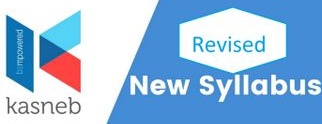kasneb
CPA FOUNDATION LEVEL
CS FOUNDATION LEVEL
CCP FOUNDATION LEVEL
INTRODUCTION TO LAW AND GOVERNANCE
THURSDAY: 16 December 2021. Time Allowed: 3 hours.
Answer any FIVE questions. ALL questions carry equal marks.
QUESTION ONE
(a) Describe two advantages that unwritten law has over written law. (4 marks)
(b) Identify five factors that are likely to undermine the rule of law. (5 marks)
(c) Explain six grounds for judicial review. (6 marks)
(d) Highlight five purposes of the writ of habeas corpus. (5 marks)
(Total: 20 marks)
QUESTION TWO
(a) Describe the jurisdiction and composition of:
(i) The International Court of Justice. (2 marks)
(ii) The Supreme Court. (2 marks)
(iii) Court of Appeal. (2 marks)
(b) Explain three key alternative dispute resolution mechanisms. (6 marks)
(c) (i) Describe the term “Dispute Review Board”. (2 marks)
(ii) Highlight three advantages of Dispute Review Boards. (6 marks)
(Total: 20 marks)
QUESTION THREE
(a) With reference to the law of persons:
(i) Outline three objectives of co-operative societies. (3 marks)
(ii) Identify seven documents that should be attached and submitted together with the application for registration of a co-operative society. (7 marks)
(b) In the context of the law of contract:
(i) Highlight four instances when past consideration will be sufficient to support a contractual claim.
(4 marks)
(ii) Provide six examples of contracts that are illegal at common law. (6 marks)
(Total: 20 marks)
QUESTIONS FOUR
(a) In relation to corporate governance:
(i) Define the term “legal audit”. (2 marks)
(ii) Discuss four purposes of legal audit. (8 marks)
(b) (i) Summarise five ethical standards required from a professional accountant. (5 marks)
(ii) Describe five acts of professional misconduct on the part of an accountant. (5 marks)
(Total: 20 marks)
QUESTION FIVE
(a) Define:
(i) A negotiable instrument. (2 marks)
(ii) A protest instrument. (2 marks)
(iii) Highlight six essential characteristics of negotiable instruments. (6 marks)
(b) Summarise five conditions necessary for ratification of an agency. (5 marks)
(c) Outline five ways through which an agency might be created. (5 marks)
(Total: 20 marks)
QUESTION SIX
(a) With specific reference to international contracts of sale, provide the full name of the following abbreviations:
(i) FAS. (1 mark)
(ii) FOB. (1 mark)
(iii) CIF. (I mark)
(iv) FCA. (1 mark)
(v) CPT. (1 mark)
(vi) CIP. (1 mark)
(b) Outline four advantages of letters of credit. (4 marks)
(c) In determining the name of a partnership for a newly formed business, identify six types of endings that a partnership could choose to add at the end of their preferred name. (6 marks)
(d) Explain two types of partnerships. (4 marks)
(Total: 20 marks)
QUESTION SEVEN
(a) Identify the four parties in creation of a letter of credit and their roles. (4 marks)
(b) Enumerate four documents that might be required to accompany an application to amalgamate or transfer an insurance business. (4 marks)
(c) Identify six types of information to be provided for a life insurance cover. (6 marks)
(d) Define the following types of guarantees:
(i) Tender guarantees. (2 marks)
(ii) Performance guarantees. (2 marks)
(iii) Warranty guarantees. (2 marks)
(Total: 20 marks)
